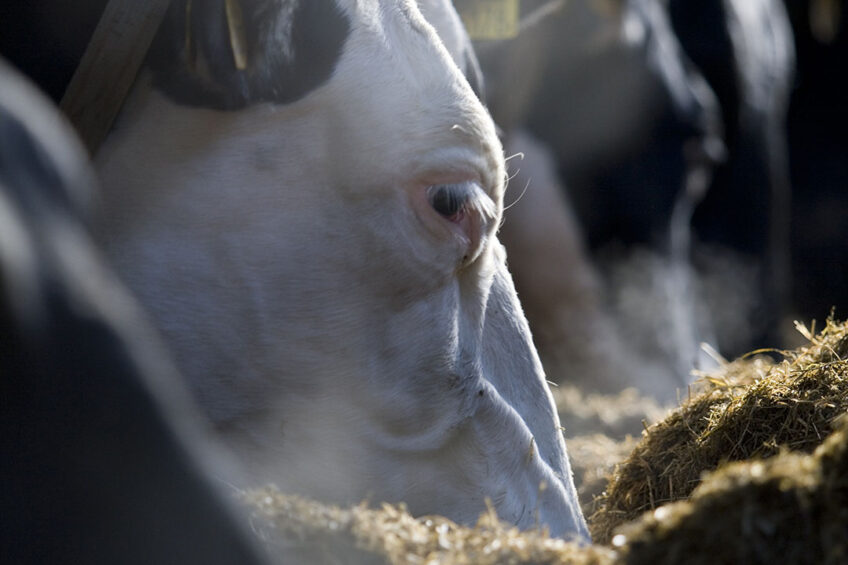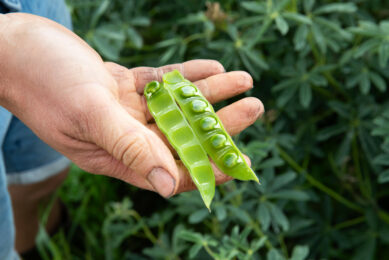Oats instead of barley: A good choice to reduce methane

Researchers from the Swedish University of Agricultural Sciences found that barley can be replaced with oats in the diet of dairy cows fed a grass silage-based diet, to mitigate CH4 emissions without compromising animal performance.
Besides the contribution of methane to greenhouse gas emissions, studies show that production of CH4 from cows represents an energy loss ranging from 2 to 12% depending on the diet. As a result, in addition to the continuous search for feed additives, it is equally important to compare the effects of the common basal ingredients on methane production. In temperate climates, oats and barley are commonly used as concentrate supplements in the diet of dairy cows. Previous production studies have found the replacement of barley by oat grain to maintain milk yields on the same level, or even increase the milk yield of dairy cows.
The previous in vitro study?
The researchers of the current study predicted the results of comparing barley and oats mainly based on the previous in vitro study. In that study, the CH4 mitigating effect of oats compared to barley was confirmed in vitro; there was 8.9% lower CH4 emissions from incubated oat-based diets compared to barley-based diets.

The Swedish study
In this study, researchers evaluated the effects of gradual replacement of barley with oats on enteric CH4 emissions, rumen fermentation, diet digestibility, milk production, and energy utilisation in dairy cows fed a grass silage-based diet. Sixteen lactating Nordic Red dairy cows received a total mixed ration [58:42 forage: concentrate on dry matter (DM) basis]. Grass silage (Phleum pratense) was the sole forage with canola meal (10% of diet DM) as a protein supplement. The grain supplements comprised 30% of diet DM. Barley was gradually substituted as follows:
- 100% barley: 0% oats
- 67% barley: 33% oats
- 33% barley: 67% oats
- 0% barley: 100% oats
Enteric methane emissions
Increased inclusion of oats linearly decreased CH4 emissions by 4.4%, and decreased methane intensity (expressed as g/kg of ECM (energy-corrected milk)) by 4.8% when barley was completely replaced by oats in the diet – indicating that CH4 emissions were mitigated without compromising animal productivity. In addition, the ratio of CH4 to CO2 decreased with increasing inclusion of oats in the diet.
The researchers remarked that, “It is well known that a positive relationship exists between diet digestibility and CH4 emissions. The decrease in CH4 emissions when replacing barley with oats may be explained by the linear decrease in organic matter digestibility, because enteric CH4 arises from digested matter. Another possible explanation is the higher fat concentration in oats compared with barley.” Oat grain contains a higher concentration of indigestible fibre compared with barley grain, as shown by the linear increase in dietary indigestible NDF concentration and intake with increasing inclusion of oats in the current study. In the current study, complete replacement of barley with oats resulted in a linear increase in the concentration and intake of dietary crude fat (9.3 g/kg DM higher). Other studies also show that dietary fat concentration is known to display a negative relationship with enteric CH4 emissions. They added that changes in rumen fermentation patterns does not explain the differences in CH4 emissions in this study, because the molar proportions of VFA were not affected by the replacement of barley.

Rumen fermentation
VFA produced by fermentation of organic matter in the rumen can have a major effect on production and product composition in ruminants. The relative proportions in which VFA are produced are influenced by several factors, including substrate composition, substrate availability and degradability, and microbial species present. Interactions between these factors may hamper conclusions with respect to the effect of 1 single factor. In this study, the total VFA concentration and fermentation pattern were not affected by increased inclusion of oats in the diet.
But the researchers expected a difference in VFA production since the OM digestibility between barley and oats differed. “However, by judging from the relatively high standard error of the mean in the current study, it is likely that the means for total VFA concentration are not fully accurate. Once-a-day sampling method with a stomach tube can increase random variation in the data due to salivary contamination and time elapsed after the last meal,” they concluded.
Milk production
The researchers recorded a numerical increase in milk yield and ECM/DMI ratio with complete substitution of barley with oats. However, the yield of milk constituents was not significantly affected by gradual replacement of barley with oats in the diet. Their attributed the increase in milk yield to the increase in dietary fat concentration when barley is replaced by oats in the diet, which probably provides additional DE for the animal.
“Compared with barley-based diets, the increase or maintenance of milk yield by dairy cows on oat-based diets could be the result of differences in energy partitioning, whereby less energy is partitioned into body fat reserves, as we observed in our study,” they said.
Digestibility and energy utilisation
Digestibility of OM, NDF, and potentially digestible NDF decreased linearly with increasing inclusion of oats. This resulted in a linear decrease in ME intake. However, increased levels of oat in the diet did not significantly affect energy balance or efficiency of ME utilisation for lactation. The researchers mentioned that a similar production despite lower ME intake may suggest that incremental energy supply from barley favoured body fat production instead of milk production, or cows mobilise body fat to support milk production when oats are fully included in the diet.
What could cause differences?
This study concludes that replacement of barley with oats in the diet of dairy cows fed a grass silage-based diet could be used as a sustainable strategy which can easily be adopted by farmers to mitigate enteric CH4 emissions without compromising animal performance. They also highlighted that differences in methane emissions and milk production could be expected due to differences in silage to concentrate ratio, level of inclusion of oats and barley in concentrate fraction, and silage type and quality.
Source: Journal of Dairy Science
Join 13,000+ subscribers
Subscribe to our newsletter to stay updated about all the need-to-know content in the dairy sector, two times a week.










